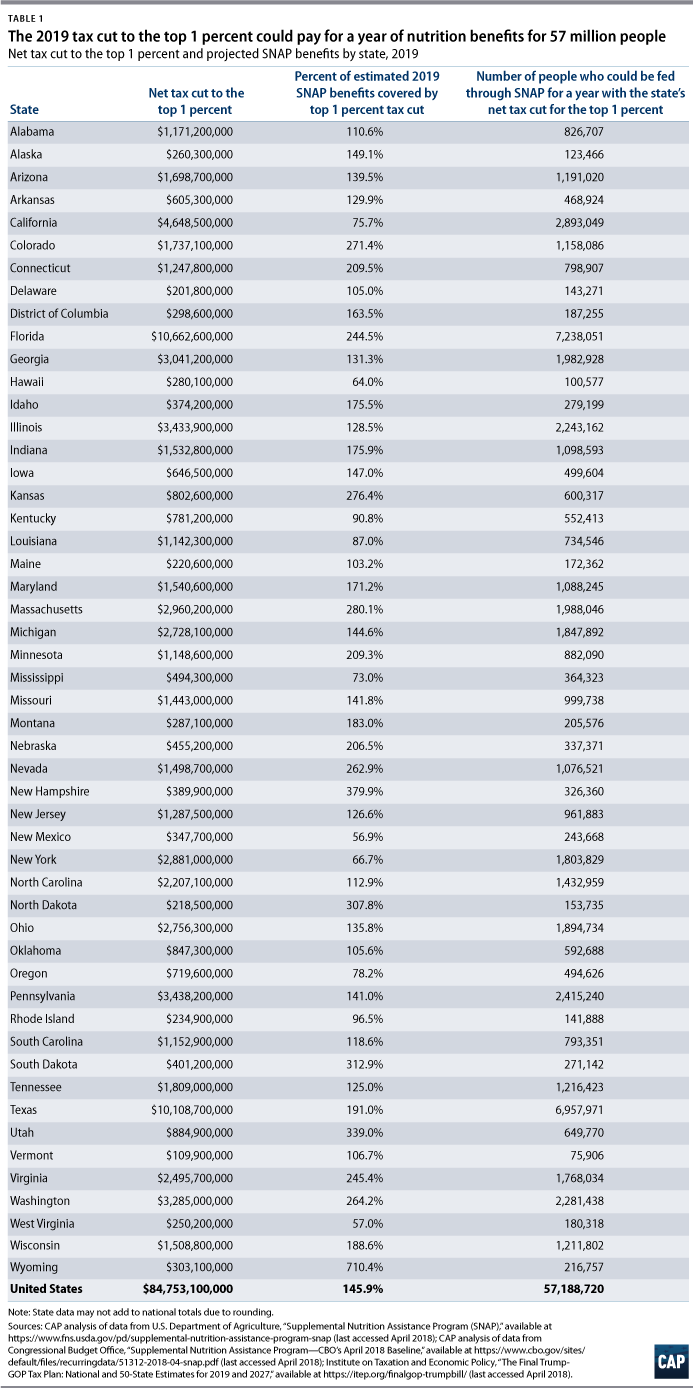The recently passed 2017 tax legislation, commonly referred to as the Tax Cuts and Jobs Act, provided a massive windfall to wealthy individuals and large corporations. According to estimates from the Institute on Taxation and Economic Policy, the richest 1 percent of households, those with incomes higher than $607,090, stand to receive a total tax cut of more than $84 billion in 2019 alone. To put this number in perspective, in 2019, the total cost of nutrition assistance benefits paid through the Supplemental Nutrition Assistance Program (SNAP)—which will support 39 million individuals—is expected to be only $58 billion. SNAP is the nation’s largest food assistance program, helping 1 in 8 families—and 1 in 4 American children—afford to put food on the table. This means that the tax cuts to the top 1 percent alone could finance the entire SNAP program for nearly 1 1/2 years. What’s more, congressional Republican leaders have made it clear that they plan on partially paying for the 2017 tax law by cutting assistance programs that benefit families in need, as well as flagship programs—such as Medicare and Social Security—on which the middle class relies. The House majority is already moving to cut SNAP in its 2018 Farm Bill, which if passed, would cut nutrition assistance for more than 2 million people.
While the revenue generated from taxes on wealthy individuals does not directly pay for SNAP benefits, comparing the tax cuts for the top 1 percent with the relatively modest cost of providing nutrition to families in need highlights the misguided priorities of the current administration and congressional majority. As seen in Table 1, the SNAP program in nearly every state could be fully funded, and in many cases expanded, had this windfall gone to nutrition benefits instead of to the 1 percent in each state.

Galen Hendricks is a special assistant for Economic Policy at the Center for American Progress. Alex Rowell is a policy analyst for Economic Policy at the Center.
Authors’ note: This analysis uses state-level spending and participant data for SNAP from the U.S. Department of Agriculture for fiscal year 2017. Data on state-level spending and participants are estimated for 2019 using national projections on SNAP spending and participants from the Congressional Budget Office. The Institute on Taxation and Economic Policy’s state-level estimates for the top 1 percent tax cuts are for calendar year 2019.